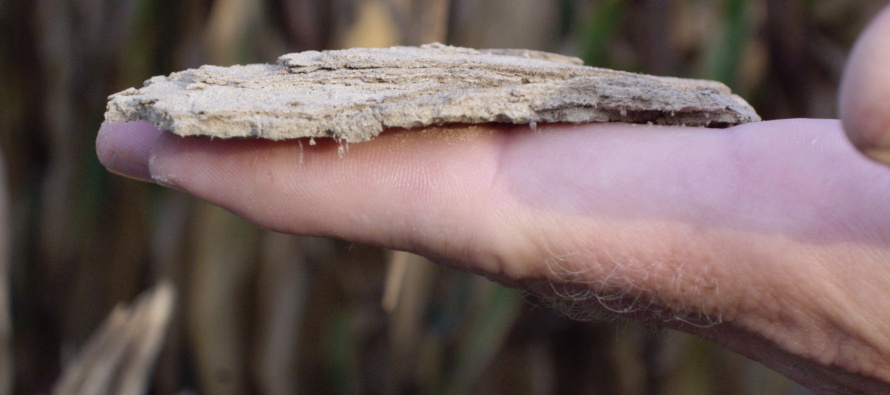Sealing Soils Confusion

Related Articles
- 2010 Row Crop Short Course Video Links 0
- Calcium and Magnesium For Mississippi Crops 0
- March 11 Precision Agriculture Workshop 0
Latest Tweets
Surface sealing in the Mississippi Delta typically occurs in soils that have a low clay and organic matter content but have a high silt fraction, i.e., most of our silt loam soils. Surface sealing, from an irrigation management standpoint, is problematic because it can drastically reduce rainfall or irrigation infiltration rates. Following is a list of means to determine if you have a soil that is prone to surface sealing:
1) Soil classified as Silt Loam
2) Battle “crusting” problems
3) Pipe Planner indicates 24 hrs to apply 2 acre-inches but you reach the tail-ditch in half the time, i.e., 1 acre-inch applied
4) Platy soil structure present in the top quarter-inch of soil surface (see pictures below)
To identify sealing soils that may have issues with poor infiltration rates first take notice of surface characteristics. The surface of a sealing soil is smooth with no visual cracks apparent. Second, take a knife and peel away the top one inch or so. Analyze the cross-section of the soil for “platy” structure. Platy soil structure consists of multiple, thin plates stacked on top of each other (see above pictures).
We ran a number of trials where we are tilling the soil at or near the lay-by timing with a Nichols parabolic anhydrous knife at a depth of 8 to 10 inches. (click on the picture to the right you can see the platy structures.) Results show better infiltration rates than the non-tilled check. Where we have tilled at lay-by, sensor readings remain much lower, especially in the deeper regions, signifying better infiltration. Yield data from these trials were inconclusive where the anhydrous knife was run as compared to the no-tillage control.
Placing surge valves on sealing soils has also proven beneficial. In nearly every case where a surge valve was deployed and used properly the advance cycle promoted water penetrated to a depth of at least 12”. Some soils may require a combination approach.
If you are having issues with sealing soils or moistures sensors not responding to irrigation and need assistance, Dr. Gholson can be reached at 979 255 7018.





Let me tell You a sad story ! There are no comments yet, but You can be first one to comment this article.
Write a comment